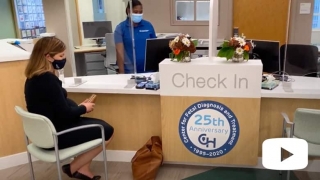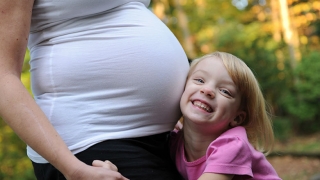Fetoscopic Endoluminal Tracheal Occlusion Referral Guidelines
The Center for Fetal Diagnosis and Treatment at Children’s Hospital of Philadelphia offers fetoscopic endoluminal tracheal occlusion (FETO) as a treatment option for unborn babies with severe congenital diaphragmatic hernia (CDH).
FETO may be offered at Children’s Hospital of Philadelphia’s Center for Fetal Diagnosis and Treatment in the following circumstances:
- Isolated left CDH
- Severe pulmonary hypoplasia as defined by O/E LHR < 25%
- Gestational age < 30 weeks (first procedure performed 270–296 weeks)
- Normal fetal karyotype
- Maternal age ≥ 18 years
FETO may not be offered if the mother meets any of the following:
- Multi-fetal pregnancy
- Additional fetal anatomic or genetic anomaly diagnosed by ultrasound, MRI or echocardiogram
- Short cervix < 15 mm (measured by cervical ultrasound) or incompetent cervix
- Latex allergy
- Other maternal medical condition precluding fetal surgery
Comprehensive evaluation of each pregnancy is essential to determine whether prenatal repair is appropriate. To refer a patient or discuss a case, please contact us at 1-800-IN UTERO (468-8376).

Shown from left to right:
- While the baby is in the womb, a fetal bronchoscope is passed through a trocar into the unborn baby’s airway.
- A balloon is then inflated inside the unborn baby’s airway and left in place. This causes fluid to build up in the unborn baby’s lungs. Pressure from the fluid causes the lungs to grow.
- After several weeks a needle is passed through the uterus to puncture and deflate the balloon. The built up pressure in the lungs then pushes the deflated balloon out through the unborn baby’s mouth.
- In another approach, a fetal bronchoscope is passed through a trocar into the unborn baby’s airway and the balloon is then pulled out using a grasper.
While the balloon is in place, the fetal airway is blocked. Unexpected delivery will be life-threatening if the proper systems are not in place to manage the airway.
As a result, mothers must remain near our fetal center, under close supervision, from the time of balloon placement through delivery in our Special Delivery Unit and discharge from our Newborn/Infant Intensive Care Unit.

